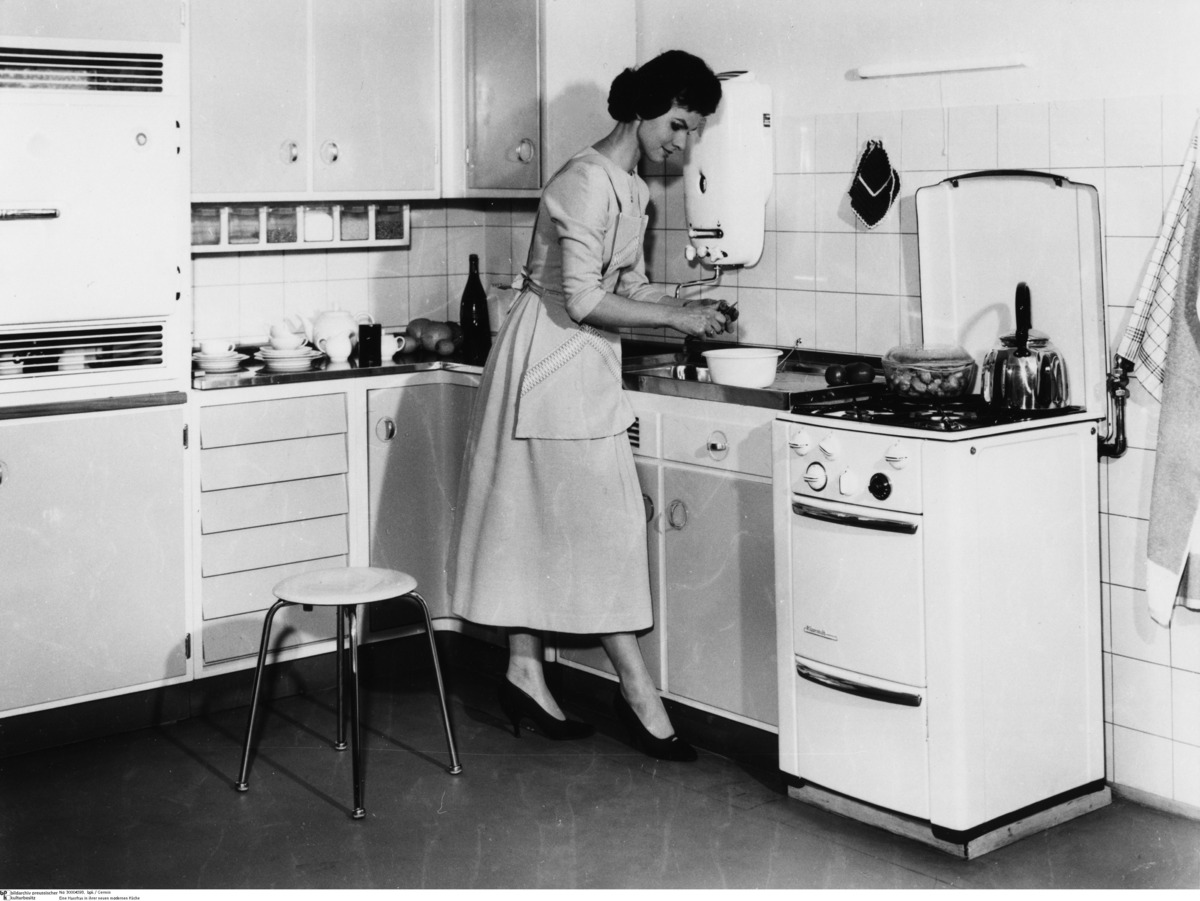Source

Source: Photo: Gerd Mingram [Germin].
bpk-Bildagentur, image
number 30004593. For rights inquiries, please contact Art Resource at
requests@artres.com (North America) or bpk-Bildagentur at
kontakt@bpk-bildagentur.de (for all other countries).
Drawing inspiration from the ideas of Taylorist rationalization, architect Margarete Schütte-Lihotzky designed the modern, space-saving Frankfurt Kitchen as early as 1926. Unfortunately, the rise to power of National Socialism prevented the design from spreading on a large scale. After undergoing further development in Sweden, Switzerland, and the United States, the standardized, streamlined kitchen returned to Germany after 1945 – and was now called the “American” or “Swedish” kitchen. While only the affluent could afford to completely redo their kitchens, most people gradually modernized them, giving priority to refrigerators and kitchen cabinets for improved use of space. While only 10 percent of all West German households owned a refrigerator in 1955, by 1962/63 the percentage had risen to 52.

Source: Photo: Gerd Mingram [Germin].
bpk-Bildagentur, image
number 30004593. For rights inquiries, please contact Art Resource at
requests@artres.com (North America) or bpk-Bildagentur at
kontakt@bpk-bildagentur.de (for all other countries).
© bpk / Gerd Mingram [Germin]